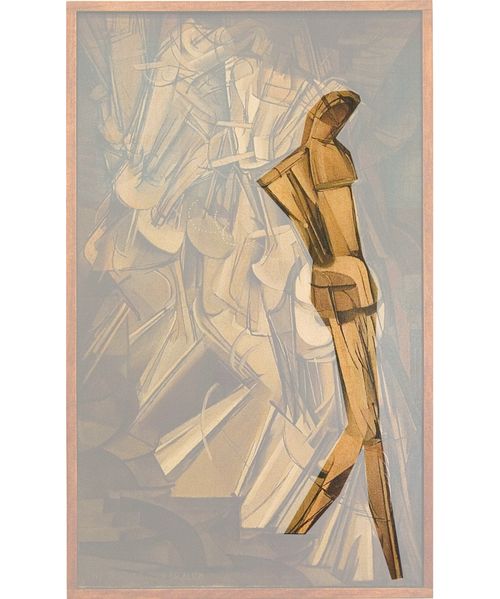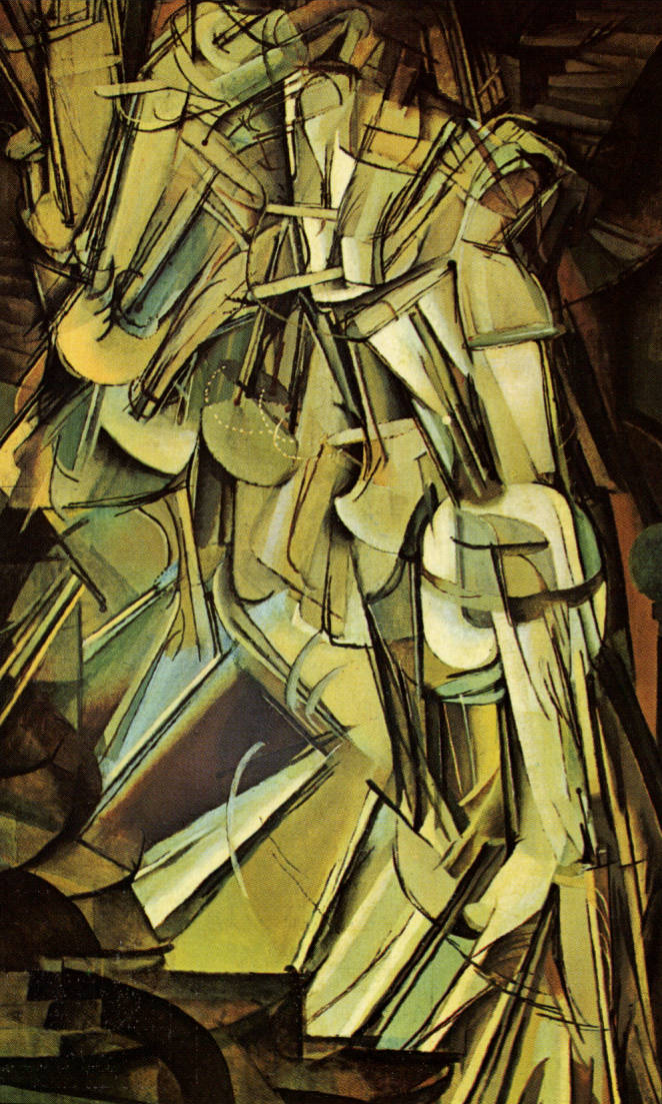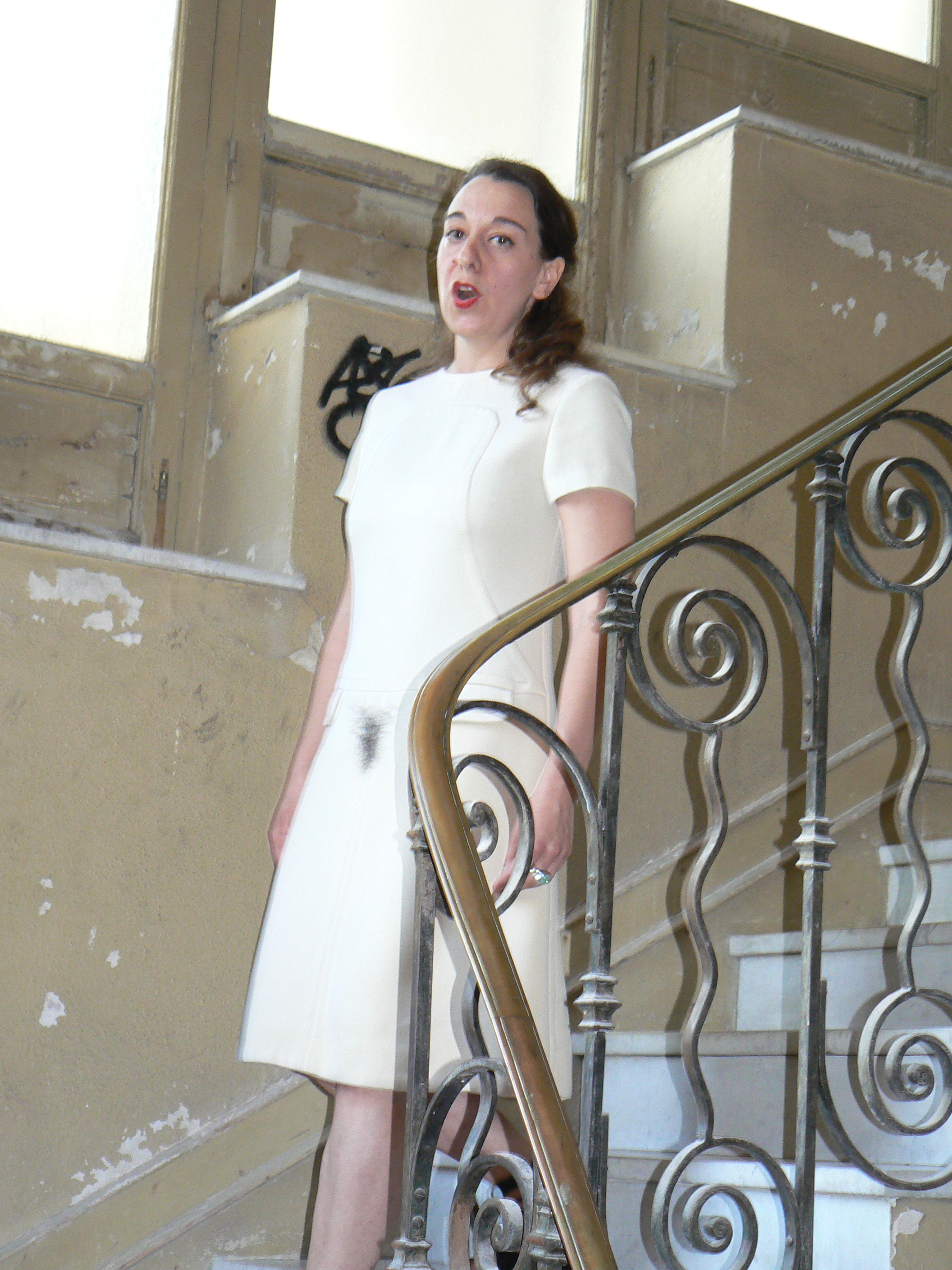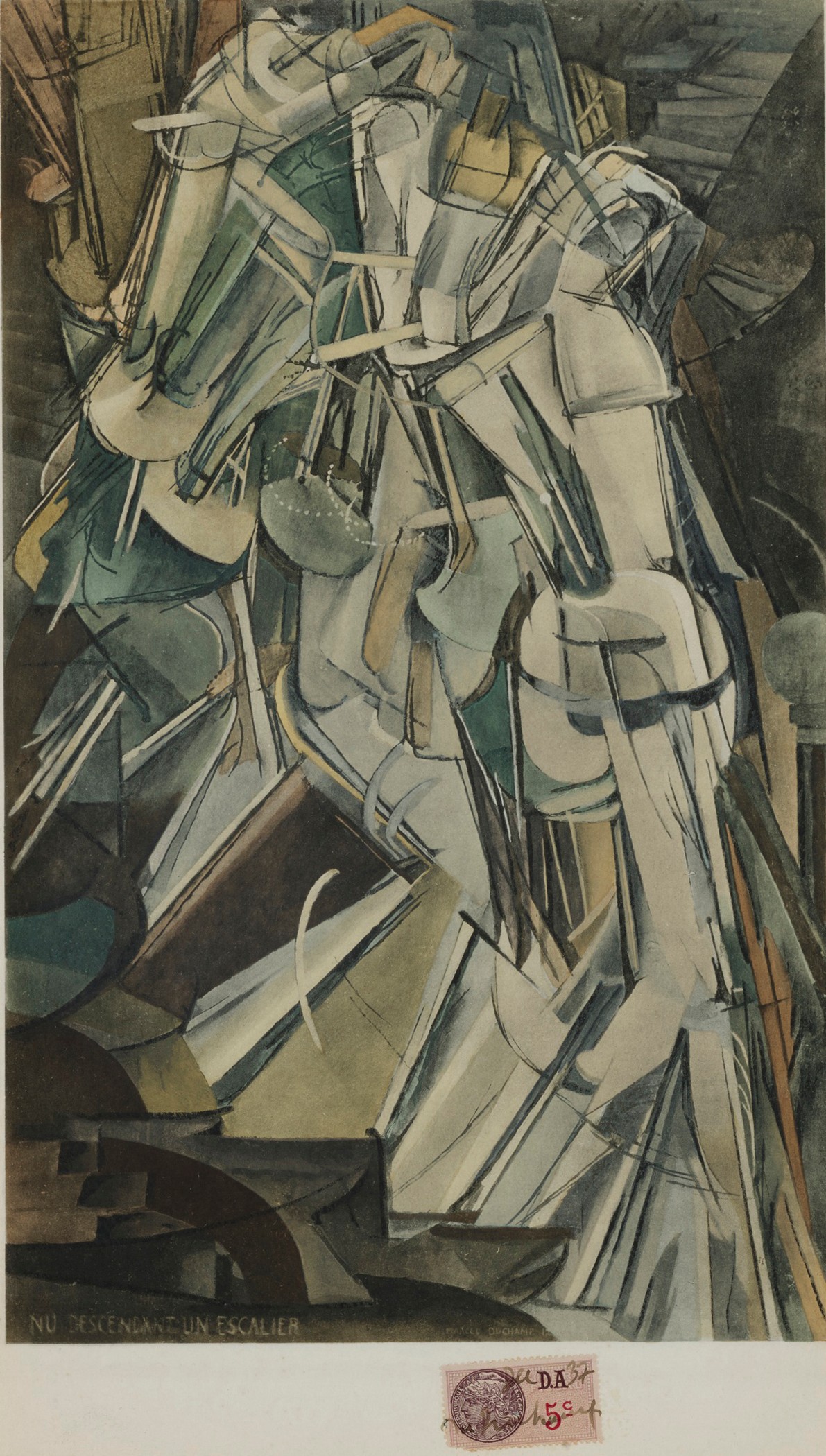
New York dans le regard d'un cubiste... (gag !) Le blog de JeanNoël LEBLANC
Nu descendant un escalier n°2 Marcel Duchamp, 1912 Huile sur toile. 146X89CM. Philadelphia, Museum of Art. Commentaire de Marcel Duchamp : « Cette version définitive du Nu descendant un escalier, peinte en janvier 1912, fut la convergence dans mon esprit de divers intérêts, dont le cinéma, encore en enfance, et la séparation des.

Épinglé sur Dessin, Laurent Kohler
Nu descendant l'escalier (N°1) est un tableau exécuté par l'artiste français Marcel Duchamp en 1911. Description et analyse [ modifier | modifier le code ] Il s'agit d'une huile sur carton , de dimension 95,9 x 60,3 cm, contrecollée sur un panneau de bois, et qui représente, selon son titre, une personne nue descendant un escalier , lequel est de forme spiralée.

DUCHAMP, Marcel Nu descendant l'escalier, n° 2.
1912 - Oil on canvas - Philadelphia Museum of Art. One of the most audacious paintings of the early 20th century avant-gardes. Duchamp's 'nus' are half-cubist, half-futurist, even half-dada icons, in which the multiplication of points of view creates an outstanding sensation of movement. The interpretation of the human body as a.

Hommage nu descendant un escalier, duo sophie taam autrice traductrice
This record is part of the Catalog of American Portraits, a research archive of the National Portrait Gallery, Smithsonian Institution. Permission to reproduce images (if available) must be obtained from the portrait owner. Please note that if an owner is listed above, this information may not be current.

Nu descendant l'escalier, Marcel Duchamp romainpellas Flickr
Nu descendant un escalier n° 2. Peinture de Marcel Duchamp (1912), 146 x 89 cm. Museum of Fine Arts, Philadelphie. C'est en 1913 que Duchamp crée l'événement, grâce au Nu descendant un escalier n° 2, réalisé l'année précédente. Refusé au Salon des indépendants de 1912, le tableau figure à l'exposition internationale d'art moderne.

Nu Descendant Un Escalier on Behance
Nu descendant un escalier est exposé au Salon de la Section d'or. C'est la dernière fois qu'il expose dans un salon en France. 1913: Nu descendant un escalier est exposé à l'Armory Show, à New York, où il triomphe. De mai 1913 à mai 1915, Duchamp travaille en tant que bibliothécaire à la Bibliothèque Sainte-Geneviève.

¤ Gjon MILI 19041984 NU DESCENDANT L'ESCALIER 1949 (HOMMA
Nu descendant un escalier n o 2 est un tableau de Marcel Duchamp peint en janvier 1912. Il fit scandale lors de son exposition à l'Armory Show de New York en février-mars 1913, mais consacra la gloire de Marcel Duchamp et marqua le début de l'art moderne aux États-Unis.

IMEDIA Nu descendant un escalier de Marcel Duchamp
Reportedly, the fellow Cubist Albert Gleizes requested that Duchamp's brothers ask him to remove the painting, more specifically, to remove the title in the bottom left corner. It was written as "NU DESCENDANT UN ESCALIER". The reasons for this have been based on questions around whether the painting should've been hung with Cubist.

1912 Marcel Duchamp nu descendant un escalier Marcel Duchamp Artwork, Oil Painting Landscape
En 1913, Nu descendant un escalier No 2 fait partie de l'envoi des peintres parisiens à un salon new-yorkais, l'Armory Show. Contre toute attente, on se presse en longues files d'attente pour le contempler. Son auteur, resté à Paris, devient pour les Américains le représentant attitré des avant-gardes et l'artiste qui a peint Nu.

His Most Famous Painting Nude Descending a Staircase, Number 2 Marcel Duchamp Dailynews
Marcel Duchamp, Nu descendant un Escalier No.2, 1912. huile sur toile, 147,5 x 89 cm. Elle a descendu l'escalier. Nue. Entièrement nue. En le découvrant, assis dans le fauteuil en osier, elle a hésité sur les marches. Il l'a suivie des yeux, elle dont il connaissait le corps du bout des doigts, à tâtons dans le noir.

Marcel Duchamp "Nude Descending a Staircase / Nu descendant un escalier" Print Art Prints
Marcel Duchamp (American (born France), 1887-1968)

Nu descendant un escalier (No 2) de Marcel Duchamp All Artworks Moderna Museet
Nude Descending a Staircase, No. 2 (French: Nu descendant un escalier n° 2) is a 1912 painting by Marcel Duchamp.The work is widely regarded as a Modernist classic and has become one of the most famous of its time. Before its first presentation at the 1912 Salon des Indépendants in Paris it was rejected by the Cubists as being too Futurist.It was then exhibited with the Cubists at Galeries.
Expo Marcel Duchamp. La peinture, même Centre Pompidou Jusqu'au 5 janvier 2015 Paris la
3. When revolutionary French artist Marcel Duchamp (1887-1968) debuted his transgressive 1912 Cubo-Futurist painting Nude Descending a Staircase, No. 2 at the 1913 International Exhibition of Modern Art (now known as The Armory Show) in New York, its reputation preceded it. News had already crossed the Atlantic heralding the semi-abstract.

Pin on NU DESCENDANT UN ESCALIER
Nude Descending a Staircase, No. 2 (French: Nu descendant un escalier n° 2) is a 1912 painting by Marcel Duchamp.The work is widely regarded as a Modernist classic and has become one of the most famous of its time. Before its first presentation at the Parisian 1912 Salon des Indépendants, it was rejected by the Cubists as too Futurist.Yet the work was exhibited with the same group at.

Toile n°19 Nu descendant l'escalier Marcel Duchamp
Nude Descending a Staircase, No. 2 (French: Nu descendant un escalier n° 2) Artist Marcel Duchamp (1887-1968) Year 1912 Creation location Paris, France Type Oil on canvas Height 57 7/8 Width 35 1/8 Depth Units in City Philadelphia Museum/Gallery Philadelphia Museum of Art: Source Philadelphia Museum of Art:

Marcel Duchamp Nu descendant un escalier Art Basel
Four Decades of Contemporary Art. Shigeko Kubota. Duchampiana: Nude Descending a Staircase. 1976. Standard-definition video and Super 8mm film transferred to video (color, silent; 5:21 min.), four cathode-ray tube monitors, and plywood. 66 1/4 x 30 15/16 x 67" (168.3 x 78.6 x 170.2 cm). Gift of Margot and John Ernst, Agnes Gund, and Barbara.